Bright Red Jacket And A Shimmering Blue Necklace Make Blue-Banded Pitta A Royalty Of The Bird World
The blue-banded pitta (Erythropitta arquata) is also known as the “Jewel of Borneo,” and judging by its colors, this title is completely justified. The bright red feathers on its abdomen and sides make the shimmering silver-blue specks around its neck stand out.
It resembles a glittering blue necklace that sits across its breast, and females also display intense colors, which is quite unusual for birds, as typically, males possess the more vibrant hues to attract females. The only notable difference in color is found in the area under the wings and around the tail.
Despite their dazzling appearance, these birds are not often spotted in the wild. As a result, scientists are still uncovering the basics of their social behavior.
Pitta birds (family: Pittidae) are found throughout Asia, Australasia, and Africa, sharing the same short, stout bodies and often exhibiting brightly colored plumage.
The blue-banded pitta is undoubtedly the most striking of them all. It is found in Indonesia, where it is native to the island of Borneo, and can also be located in Brunei and Malaysia.
Blue-banded pittas feed on snails, insects, and similar invertebrates. They lay up to six eggs in large, round-shaped nests in trees or shrubs, and sometimes on the ground.
This bird is also known as the "Jewel of Borneo"
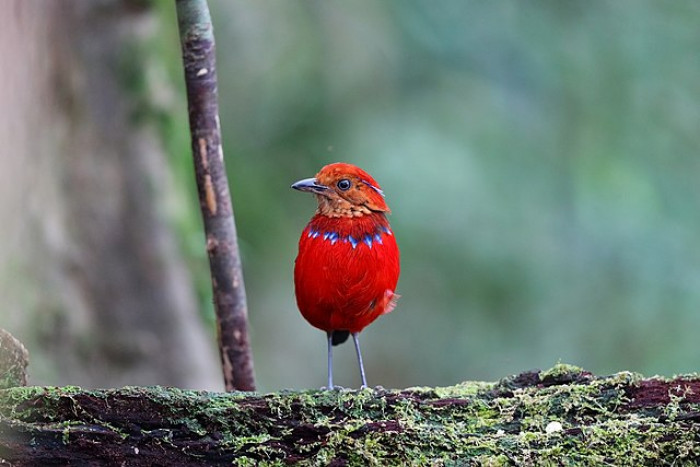
Blue-banded pitta belongs to the Pittidae family
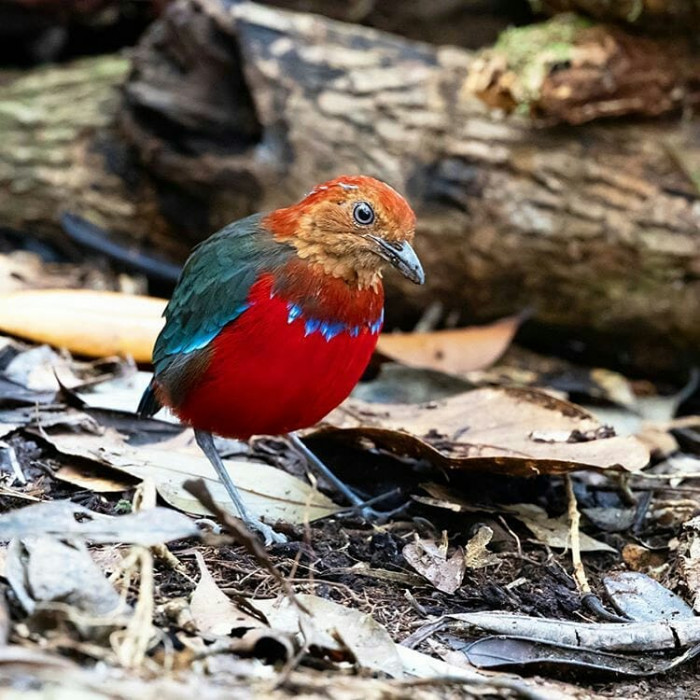
Due to this bird's extensive range, the blue-banded pitta is not considered to be under any immediate threat. It primarily inhabits submontane forests, often with bamboo stands and fallen trees, most commonly at elevations of 600 to 1,200 meters, but recorded from 150 to 1,500 meters.
The breeding season lasts from January to September, with a peak from March to August. The spherical nest is constructed from dead leaves, grass, and fibers, and is placed 0.5 to 2.5 meters above the ground in a tree.
The blue-banded pitta is found in Indonesia, and it is native to the island of Borneo

In general, these birds are very shy, which hinders detailed study. They sometimes exhibit behavior that surprises scientists.
For example, researchers have observed the pittas making noises without calling to communicate, which is unusual for birds.
The scientists also noted the use of sonations, or non-vocal sounds. These sonations resemble a soft knock on wood and appear to be produced using their wings.
In one instance, after the bird called out for a while, it lifted its wings, puffed its feathers on its belly, and then beat its wings like a drum.
But it can also be found in Brunei and Malaysia
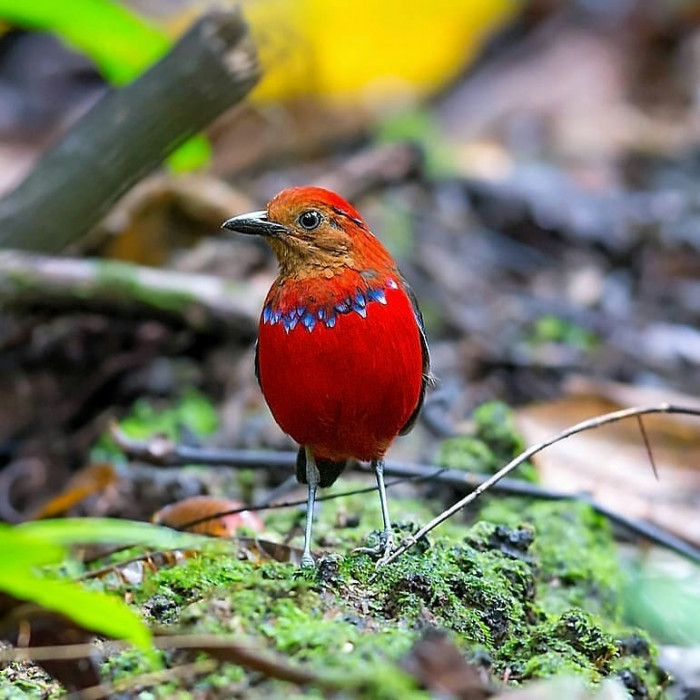
It is a shy bird that primarily inhabits hilly and subtropical or tropical moist lowland forests
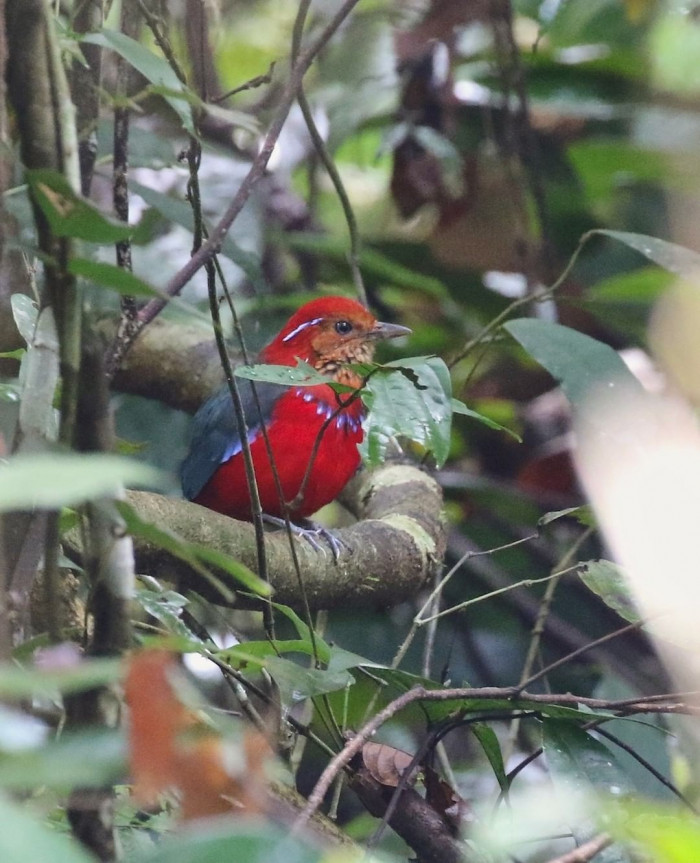
Blue-banded pitta primarily feeds on insects, snails, and other invertebrates
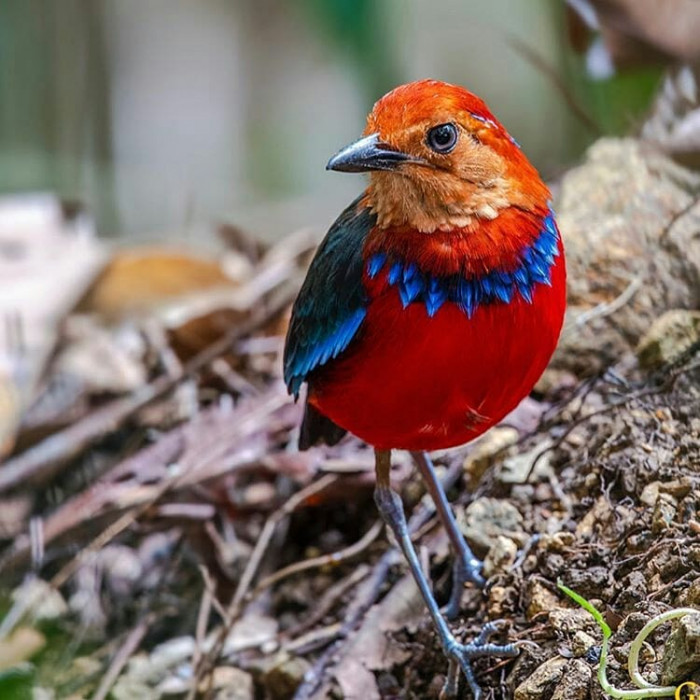
Pittas lay up to six eggs in large, round-shaped nests
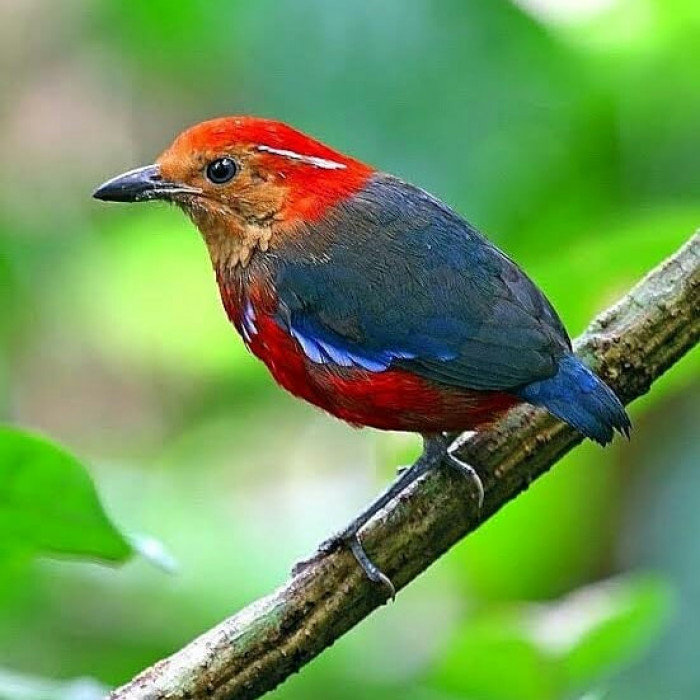
Watch them on video here:
Our selfish side is very disappointed that this bird is so shy and difficult to find in nature, but on the other hand, staying away from humans and their habitats is likely what keeps the population of these birds stable. What a magical world...



